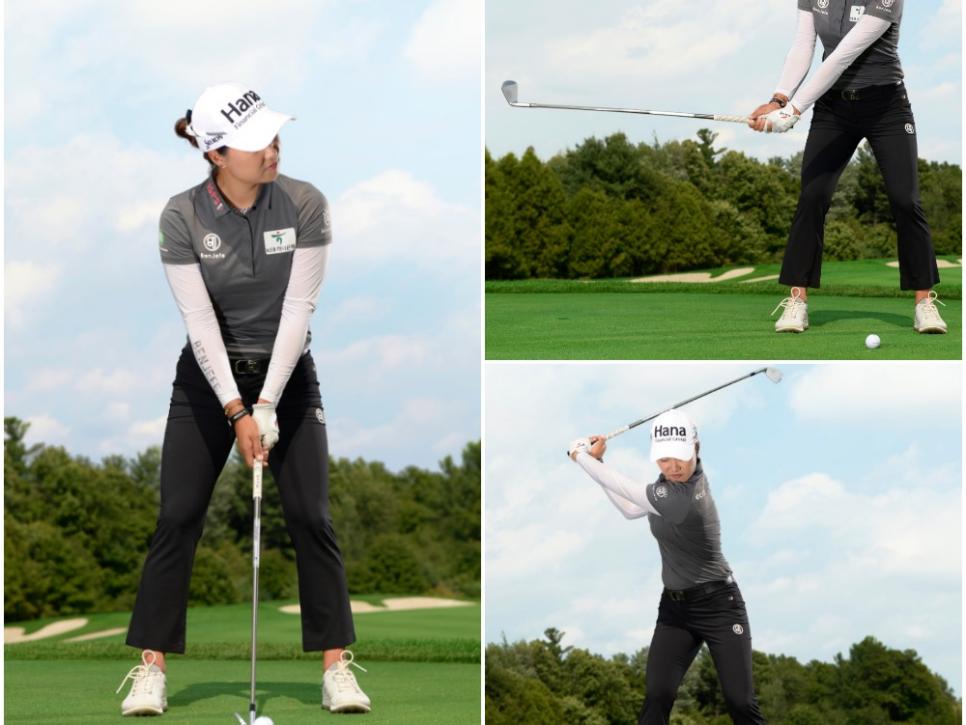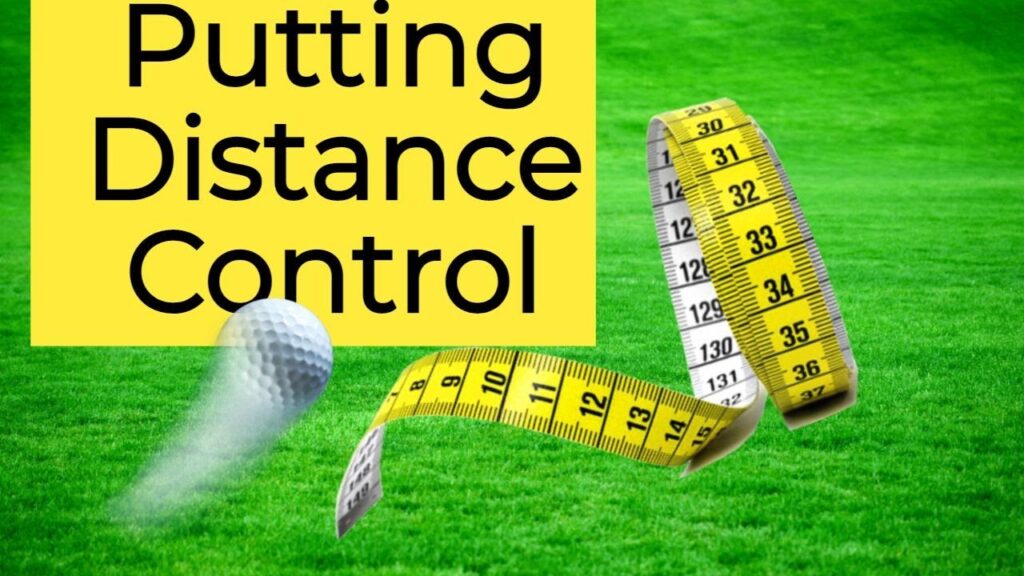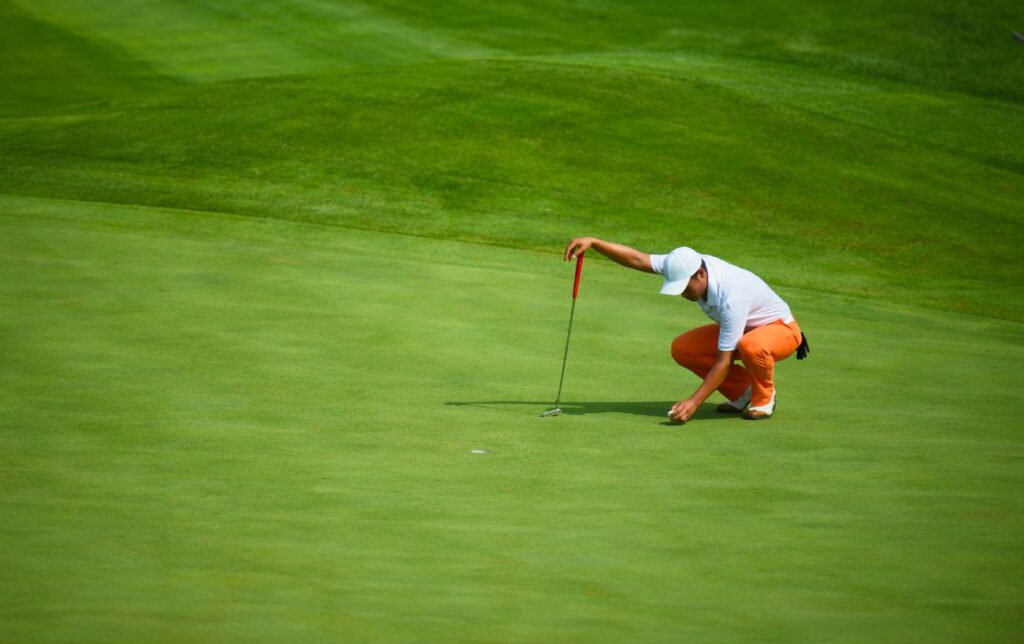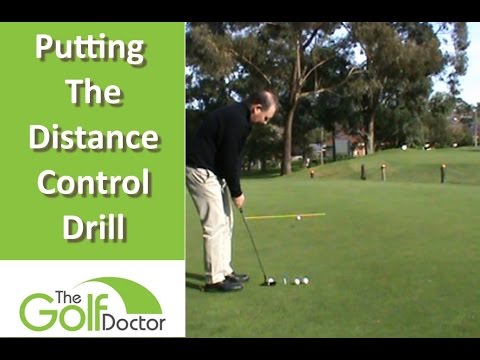If you’re looking to improve your distance control in any aspect of your life, whether it’s in sports or everyday tasks, finding the best way to do so can be challenging. Distance control is crucial for achieving accuracy and success in various endeavors, but how exactly can you fine-tune this skill? In this article, we will explore effective techniques and strategies that can help you master distance control, providing you with the tools you need to excel and accomplish your goals. So, whether you’re aiming for that perfect golf swing or simply want to improve your aim in darts, get ready to discover the best way to work on distance control and elevate your performance to new heights.
Importance of Distance Control
Distance control is one of the most crucial aspects of golf that every player must master. Whether you are a beginner or a seasoned golfer, having the ability to control the distance of your shots can greatly impact your game. From improving your scoring to enhancing your overall performance, distance control plays a pivotal role in shaping your success on the golf course.
Why is distance control important?
Distance control is important because it allows you to consistently hit your shots to the desired distance and land them close to the target. When you have control over the distance, you can effectively plan your approach to each hole, strategically avoiding hazards and positioning yourself for optimal scoring opportunities. Without proper distance control, you may find yourself struggling to reach the green or constantly overshooting your targets, resulting in increased strokes and frustration.

The impact of distance control on scoring
Accurate distance control not only helps you avoid unnecessary penalties, but it also directly affects your scoring ability. By consistently hitting your shots the desired distance, you increase your chances of landing the ball closer to the hole. This, in turn, reduces the number of putts required to finish a hole, leading to lower scores. Additionally, when you can control the distance with various clubs, you can confidently choose the most appropriate club for each shot, enabling you to hit the ball to the desired distance more consistently.
Different types of shots that require distance control
Distance control is essential for various shots in golf, including full swings, pitch shots, chip shots, and even putts. Each of these shots requires a different level of distance control, and mastering them will greatly enhance your overall game.
Full swings: In full swings, distance control is crucial to maximizing the potential of each club. Whether you are attempting to reach the green in regulation or set up an approach shot, being able to control the distance with your irons and woods is vital.
Pitch shots: When faced with a short approach shot around the green, the ability to control the distance of your pitch shots becomes paramount. A well-executed pitch shot can result in the ball landing close to the pin and setting up a possible birdie opportunity.
Chip shots: Chip shots are delicate shots played from just off the green. Having the right distance control enables you to accurately land the ball on the green and control its roll towards the hole. This is particularly important when navigating challenging green complexes and avoiding costly three-putts.
Putts: Distance control is equally significant when it comes to putting. By developing a feel for the distance and controlling the speed of your putts, you can consistently lag the ball close to the hole, increasing your chances of sinking more putts and reducing your overall putting average.

Understanding the Fundamentals
Before delving into specific techniques for improving distance control, it is essential to understand and master the fundamental principles of the game. These building blocks lay the foundation for your game and significantly impact your ability to control the distance of your shots.
Grip and posture
The way you grip the club and position your body at address greatly influences your swing and, consequently, your distance control. Maintaining a neutral grip and a balanced posture ensures that you have greater control over the clubface, allowing you to consistently strike the ball with precision. Taking the time to learn and practice proper grip and posture fundamentals will set you up for success in your quest for improved distance control.
Alignment and aim
Proper alignment and aim are vital for achieving accurate distance control. Aligning your body parallel to the target line and aiming the clubface square to your target will ensure that you can consistently swing the club on the desired path. Misalignment can lead to off-target shots and inconsistent distance control, making it imperative to develop good alignment habits.
Swing mechanics
The mechanics of your swing directly impact how you strike the ball and control the distance. A smooth and balanced swing allows for better clubface control and the ability to generate consistent power. Understanding the key components of the golf swing, such as the takeaway, backswing, downswing, and follow-through, will help you develop a more repeatable swing, leading to more accurate distance control.
Developing Consistency in Swing Length
One of the essential factors in distance control is having a consistent swing length. By maintaining the same swing length for each club, you establish a reliable reference point from which to gauge the distance. Here are some techniques to help you develop and maintain consistency in your swing length.
The role of tempo in distance control
Tempo refers to the rhythm and speed of your swing. Having a consistent tempo is crucial for maintaining consistent swing length, as it allows you to time your swing properly and control the speed at which the clubhead meets the ball. A smooth and balanced tempo helps optimize energy transfer and accuracy, resulting in improved distance control.
Practicing with a metronome
One effective method for developing consistent swing length is to practice with a metronome. Set the metronome to a specific beat or tempo and synchronize your swing with it. This trains your body to maintain a constant rhythm and ensures consistent swing length. Gradually increase the tempo over time to challenge yourself and further improve distance control.
Using a swing trainer to improve rhythm
Swing trainers, such as weighted clubs or training aids, can aid in developing a consistent swing length. These tools help build muscle memory and reinforce the proper mechanics of your swing. By practicing with a swing trainer regularly, you can improve your swing rhythm, timing, and ultimately, your distance control.
Drills for consistent swing length
Engaging in specific drills designed to promote consistent swing length is an effective way to improve your distance control. For example, try hitting balls with a half-swing or three-quarter swing, focusing on maintaining the same length throughout. This allows you to develop a sense of how far the ball will travel with different swing lengths, ultimately leading to better distance control.

Mastering Club Selection
Selecting the right club for each shot is crucial in achieving accurate distance control. Different clubs have distinct characteristics and are designed for specific distances. By understanding these characteristics and considering various factors, you can make informed decisions and choose the appropriate club to achieve the desired distance.
Understanding the characteristics of each club
Each club in your bag has unique characteristics that affect distance and trajectory. Drivers and fairway woods are designed for maximizing distance off the tee or fairway. Irons offer precision and control at various distances, with lower-numbered irons providing more distance and higher-numbered irons offering more loft for shorter shots. Wedges are designed for enhanced control around the green and in various scoring situations. Understanding the characteristics of each club will help you make informed decisions and select the most suitable club for each shot.
Factors to consider when selecting a club
Several factors should be considered when selecting a club for a particular shot. These factors include the distance to the target, wind conditions, hazards, and the lie of the ball. Assessing these variables allows you to make educated choices and adjust your club selection accordingly. By factoring in these variables, you can effectively control the distance and improve your scoring opportunities.
Establishing a baseline for different yardages
Creating a baseline for the distance each club produces allows you to have a consistent starting point in terms of yardages. Spend some time on the practice range to determine how far you hit each club under normal conditions. This will provide you with a reference point when faced with various shots on the course. Over time, as you refine your swing and distance control, you can fine-tune your baseline yardages to ensure accurate club selection.
Fine-tuning club selection using launch monitors
The advancement of technology has introduced launch monitors, which provide accurate data on various aspects of your swing and ball flight. Utilizing a launch monitor during practice sessions can help fine-tune your club selection by providing real-time feedback on factors such as swing speed, ball speed, launch angle, and carry distance. This data allows you to make data-driven decisions and select the club that will yield the desired distance with optimal control.
Effective Practice Techniques
Effective practice techniques are essential for honing your distance control skills. Purposeful and structured practice not only enhances your ability to control the distance but also builds confidence in executing precise shots on the course. Here are some practice techniques to improve your distance control:
Creating a structured practice routine
Developing a structured practice routine helps ensure that you are dedicating enough time to specific areas of your game, including distance control. Set aside dedicated practice sessions to focus solely on refining your ability to control the distance with different clubs and types of shots. This structured approach allows for a deliberate and systematic improvement in your distance control skills.
Working on proximity to target
One effective practice technique for distance control is to aim for specific targets at varying distances. Start with shorter targets and gradually increase the distance as you become more comfortable and consistent. By working on hitting the ball closer to the target, you develop a better sense of how far your shots travel and improve your ability to control the distance effectively.
Incorporating variance in shot distances
To simulate on-course scenarios, practice hitting shots that require different distances. Mix up your practice routine by hitting a series of shots at specific yardages, rather than always practicing with a full swing. This variance in shot distances helps you develop adaptability and precision in different situations, enhancing your overall distance control.
Practicing uphill and downhill shots
Uphill and downhill shots pose unique challenges in distance control. Practicing on slopes allows you to develop the ability to adjust your swing and power to compensate for the effects of gravity. Incorporating uphill and downhill shots into your practice routine helps you become comfortable with these situations and improves your distance control on uneven terrain.
Challenging yourself with different lie conditions
Different lie conditions, such as rough or sand, require adjustments in distance control. By practicing shots from these challenging lies, you become more proficient at adapting your swing and club selection to achieve the desired distance. This prepares you for real-life scenarios on the course, where lie conditions can significantly impact your distance control.

Developing Feel and Touch
Developing feel and touch is another critical aspect of distance control. The ability to manipulate the ball and have a sense of how it will react upon impact greatly contributes to accurate distance control. Here are some techniques to develop feel and touch in your shots:
Using different grips for different shots
Experimenting with different grips can provide greater control over the clubface and the desired shot outcome. For example, a softer grip may yield more touch and finesse, while a firmer grip can generate more power. By adapting your grip to suit the shot, you can enhance your feel and touch, enabling better distance control.
Learning to control spin
Controlling the amount of spin on the ball is crucial in distance control. Depending on the shot, you may want to impart more backspin or reduce spin for better distance control. Developing the ability to manipulate spin through subtle changes in clubface angle and ball position helps you control the trajectory and distance of your shots with precision.
Practicing distance control with half shots
Mastering distance control with half shots is an effective technique for developing feel and touch. By deliberately hitting shots with reduced swing length, you can focus on achieving the desired distance without relying on a full swing. This allows you to fine-tune your control and adapt to different yardages more effectively.
Mastering the art of lag putting
Lag putting is a skill that requires a delicate touch and precise distance control. By practicing lag putts from various distances, you can hone your ability to judge speed and control the distance to the hole accurately. Mastering the art of lag putting not only reduces the number of three-putts but also improves your overall confidence in your distance control abilities.
Managing Wind and Slopes
The elements encountered on a golf course, such as wind and slopes, significantly influence distance control. Learning to adapt to these conditions is essential for maintaining accuracy and control over your shots.
Adjusting for wind direction and intensity
When playing in windy conditions, proper distance control necessitates accounting for both the direction and intensity of the wind. For downwind shots, it is crucial to take into consideration how the wind will affect the ball’s carry and roll. Conversely, into the wind shots require added power to combat the wind resistance and maintain distance control. Developing the ability to adjust for wind conditions effectively ensures more accurate shots and better distance control.
Modifying shot trajectory to counter wind
In addition to adjusting for wind direction and intensity, altering the trajectory of your shots can mitigate the wind’s impact on distance control. Lowering the ball flight and using more penetrating shots can help you combat headwinds, while higher shots can take advantage of tailwinds. Being able to manipulate shot trajectory gives you greater control over distance in various wind conditions.
Understanding the effect of uphill and downhill lies
Uphill and downhill lies significantly affect how the ball travels and should be factored into distance control. Uphill lies tend to reduce the distance and trajectory of the shot, while downhill lies can increase both. Developing the ability to adjust your setup, aim, and swing to accommodate these lies is essential for maintaining accurate distance control.
Techniques for controlling ball speed on slopes
Controlling the speed of the ball when faced with uphill and downhill slopes is crucial in distance control. Uphill putts require additional power, while downhill putts need a delicate touch to avoid overshooting the hole. Practice techniques that focus on controlling ball speed, such as varying your backswing length or modifying the pace of your stroke, can greatly improve your distance control on slopes.

Analyzing and Learning from Feedback
Analyzing and learning from feedback is an essential component of improving your distance control skills. By leveraging technology, data, and personal observations, you can gain valuable insights into your performance and identify areas for improvement.
Importance of shot analysis in improving distance control
Analyzing your shots allows you to gain a deeper understanding of how different factors contribute to distance control. By reviewing your shots in real-time or through video analysis, you can observe your swing mechanics, ball flight, and landing point, providing valuable feedback for making necessary adjustments. Shot analysis offers a holistic perspective that helps identify both strengths and weaknesses in your distance control.
Utilizing technology and data for feedback
Modern technology, such as launch monitors and shot-tracking devices, provides precise data on various aspects of your performance. Utilizing these tools allows you to more accurately assess your distance control and identify areas that require improvement. Analyzing data on factors like ball speed, launch angle, and carry distance helps you target specific aspects of your game that may be affecting your distance control.
Tracking statistics to identify areas for improvement
Tracking statistics, such as greens in regulation (GIR), putts per round, and proximity to the hole, provides valuable insights into your distance control ability. Over time, monitoring these statistics helps you identify trends and patterns, allowing you to focus on specific areas that may require improvement. Tracking statistics provides a data-driven approach to analyzing distance control and offers an objective measurement of progress.
Video analysis to identify swing flaws
Video analysis is a powerful tool for identifying swing flaws that may be affecting your distance control. Recording your swing from different angles allows you to assess your mechanics, position, and movement. By comparing your swing to professional golfers or seeking guidance from a golf instructor, you can identify potential swing flaws that may hinder your distance control. Armed with this knowledge, you can make the necessary adjustments to improve your distance control.
Mental Strategies for Better Distance Control
Distance control is not solely reliant on physical skills; mental strategies play a significant role as well. Cultivating a positive mindset and applying effective mental strategies can greatly enhance your distance control on the golf course.
Developing a pre-shot routine
A pre-shot routine helps establish a consistent process and mental state before each shot. By implementing a routine that includes visualizing the desired shot, assessing external factors, and mentally preparing yourself, you can enter a focused and confident state. This mental preparation translates into improved distance control as it helps eliminate distractions and ensures that you approach each shot with intention and clarity.
Visualizing and imagining the desired shot
Visualization is a powerful tool for enhancing distance control. Before executing a shot, take a moment to visualize the ball traveling the desired distance and landing close to the target. Imagining the shot with a clear and detailed image helps program your subconscious mind and improves your ability to execute the shot with precision.
Managing pressure and staying focused
Pressure situations can often impact your distance control, causing unnecessary tension and affecting your performance. Learning to manage pressure and maintain focus, even in high-stakes moments, is crucial for consistent distance control. Implementing deep breathing techniques, positive self-talk, and mental imagery can help reduce anxiety and keep your mind centered on the task at hand.
Building confidence through successful shots
Confidence plays a significant role in distance control. The more successful shots you execute, the more confidence you build in your ability to control the distance. Celebrate your achievements, big and small, and embrace positive reinforcement. Confidence in your distance control translates to a more relaxed and controlled swing, leading to improved results on the course.
Taking Lessons from Professionals
Seeking guidance from professionals, whether it be a golf instructor or studying the techniques of professional golfers, can provide valuable insights and techniques to improve your distance control.
Working with a golf instructor
Enlisting the help of a qualified golf instructor can fast-track your improvement in distance control. A professional instructor can assess your current skill level, identify areas for improvement, and provide personalized instruction to enhance your distance control technique. Their expertise and guidance can help you understand your strengths and weaknesses and develop a plan for improvement.
Learning from professional golfers
Studying and learning from professional golfers can offer inspiration and insight into effective distance control techniques. By observing their swings, approach to club selection, and shot execution, you can gain a better understanding of the mechanics and mental strategies employed by the best in the game. This knowledge can be incorporated into your own practice and play, ultimately improving your distance control.
Analyzing and implementing their techniques
Analyzing the techniques of professional golfers can provide valuable lessons in distance control. By breaking down their swings and shot selection strategies, you can identify specific elements that contribute to their success. Implementing these techniques in your own game, with the guidance of a golf instructor if needed, enables you to refine your distance control and elevate your overall performance.
In conclusion, distance control is a vital skill that every golfer should strive to master. Effective distance control enhances scoring opportunities, reduces penalties, and brings a sense of confidence to your game. By understanding the fundamentals, practicing with purpose, developing feel and touch, managing external factors, analyzing feedback, implementing mental strategies, and seeking guidance from professionals, you can significantly improve your distance control and enjoy a more successful and enjoyable golfing experience. So, embrace the challenge, commit to intentional practice, and watch your distance control skills soar to new heights!





